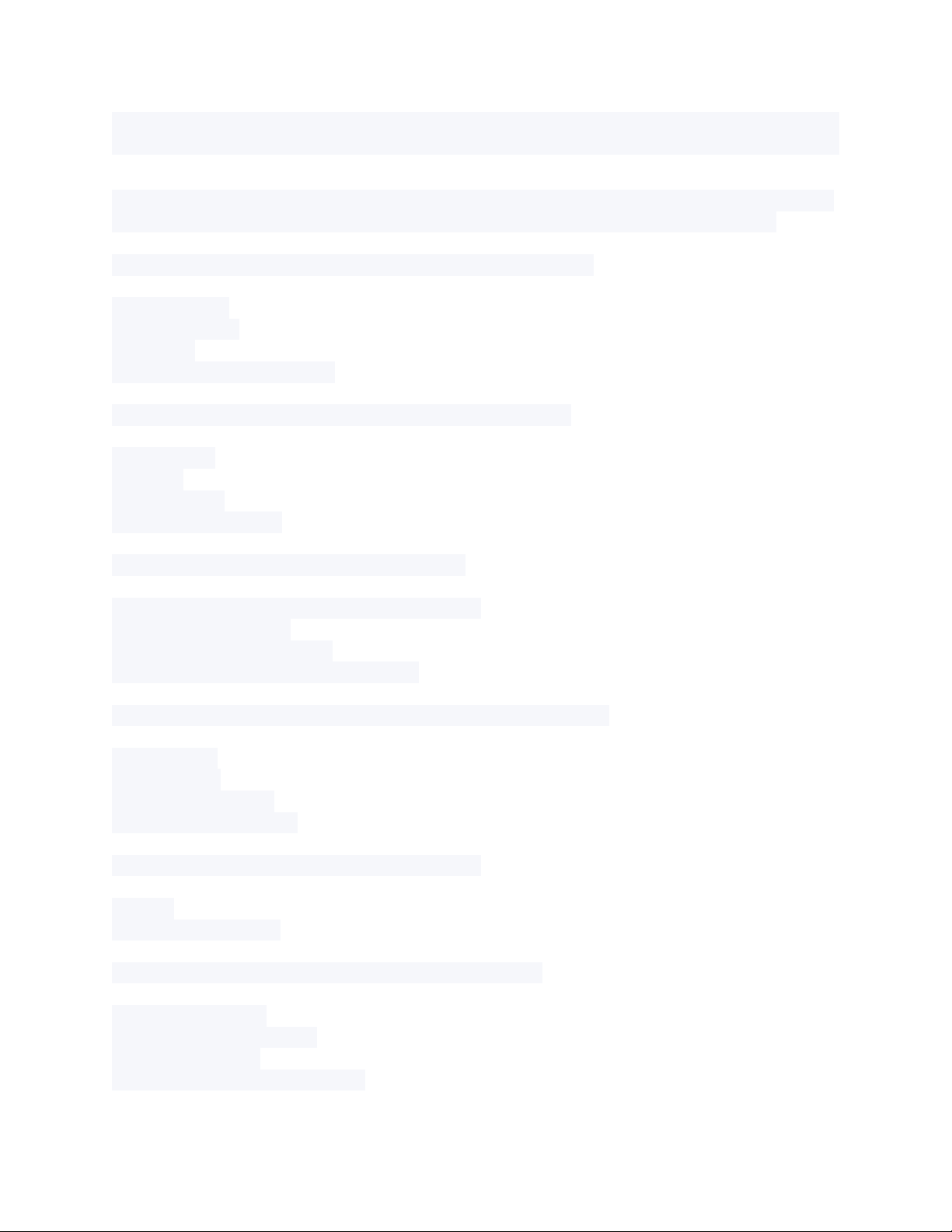
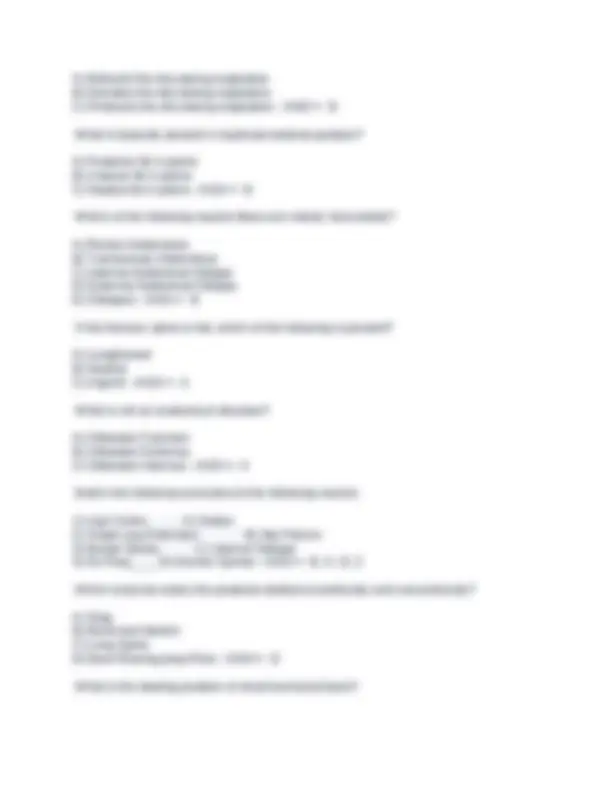
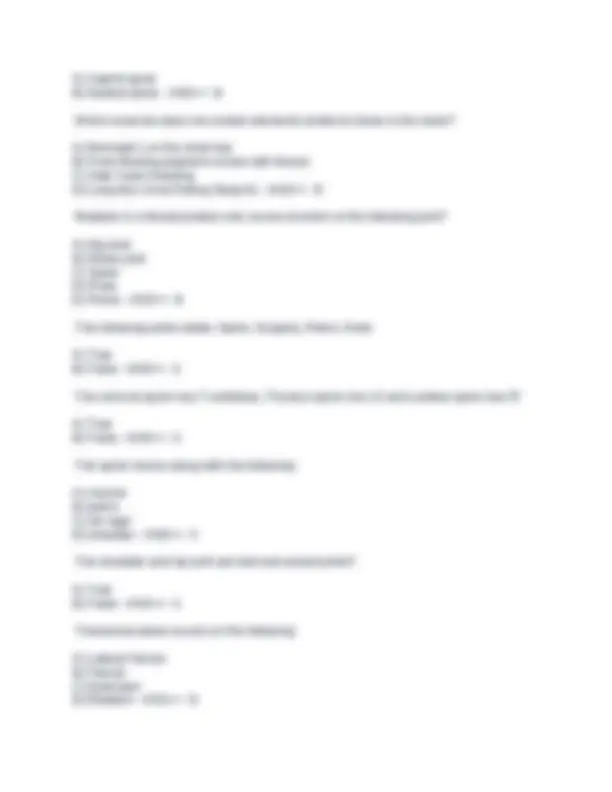
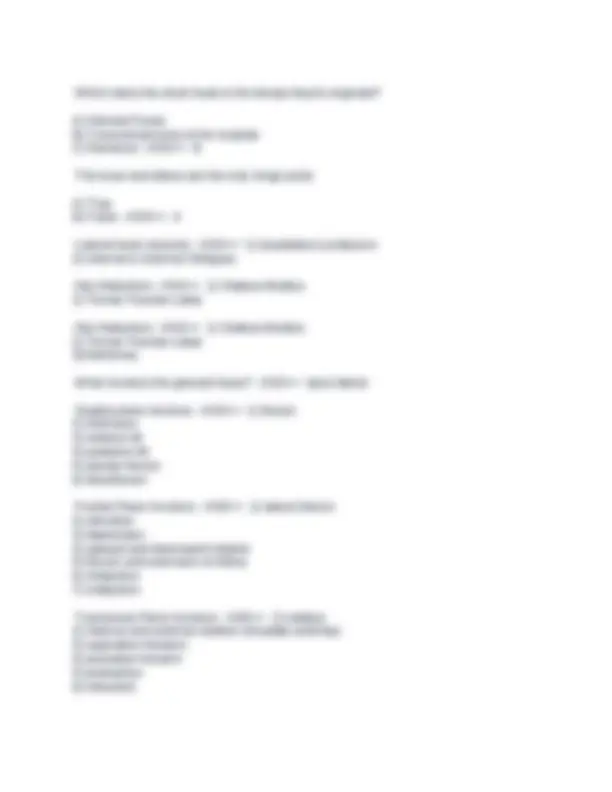
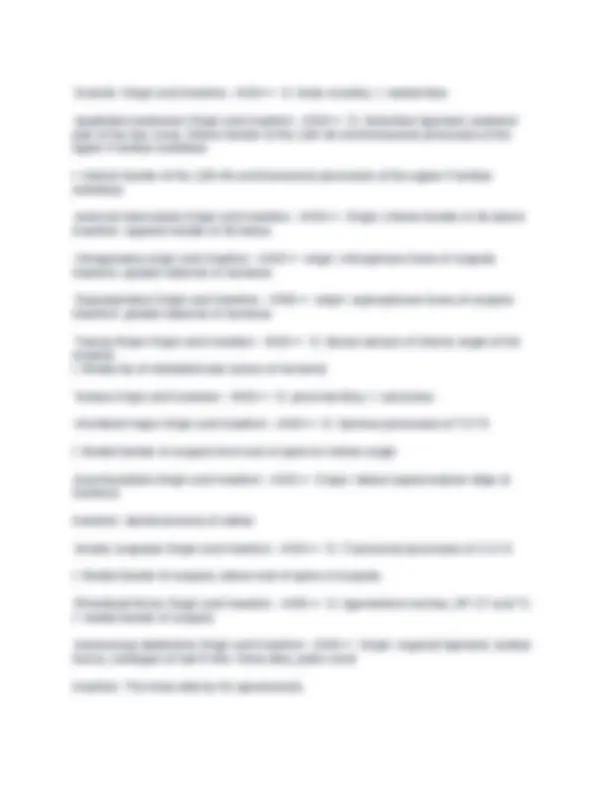
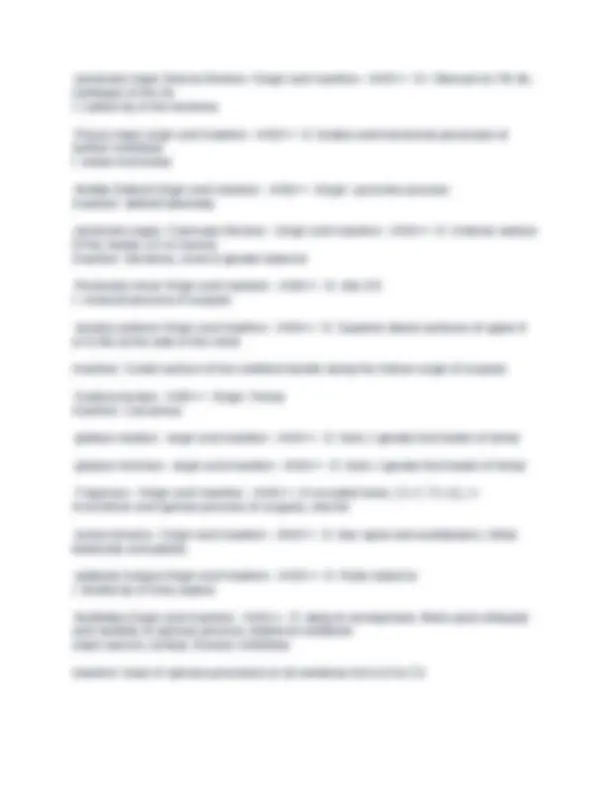
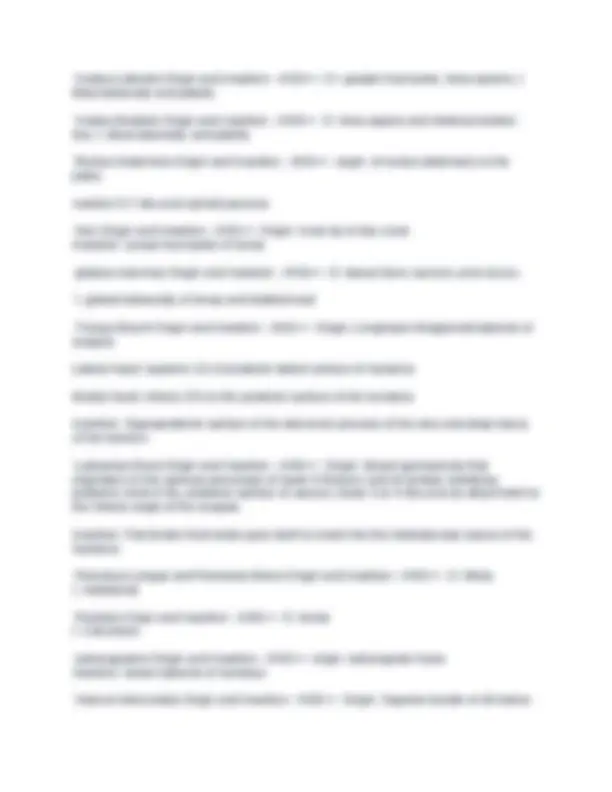
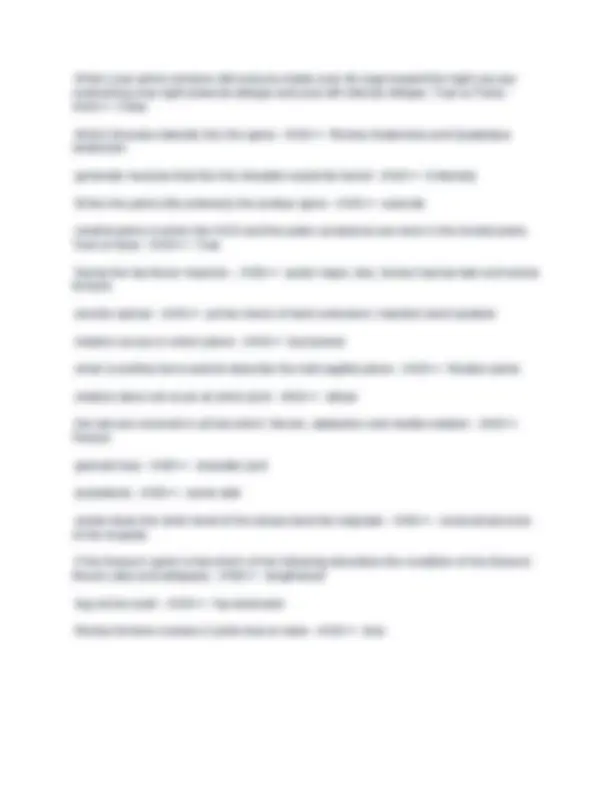


Study with the several resources on Docsity

Earn points by helping other students or get them with a premium plan


Prepare for your exams
Study with the several resources on Docsity

Earn points to download
Earn points by helping other students or get them with a premium plan
Community
Ask the community for help and clear up your study doubts
Discover the best universities in your country according to Docsity users
Free resources
Download our free guides on studying techniques, anxiety management strategies, and thesis advice from Docsity tutors
Detailed information on various aspects of human anatomy, including transverse and multiplanar movements, the axial skeleton, and the origins and insertions of various muscles. Topics covered include the functions of the nervous system in relation to these movements, the locations of muscle origins and insertions, and the names of specific bones and muscles involved.
Typology: Exams
1 / 13

This page cannot be seen from the preview
Don't miss anything!








Which of the following does not represent how STOTT Pilates has evolved from Joseph Pilates original method? - ANS>> Focus on more flat spine than original method What is another term used to describe mid-sagittal plane? A) Transverse B) Circuduction C) Frontal D) Medial Plan - ANS>> D Rotation does not occur at which of the following joints: A) knee joint B) pelvis C) elbow joint D) spine - ANS>> C Lordosis describes which of the following? A) An exaggerated curve in the lumbar spine B) A flat lumbar spine C) A hyper extended spine D)A flexed thoracic spine - ANS>> A Lattisimus Dorsi is involved in all but which of the following? A) Extension B) Retraction C) Medially Rotates D) Flexion - ANS>> D Lattismus Dorsi assists in forced expiration? A) True B) False - ANS>> A Which muscle flexes the knee and extends the hip? A) Rectus Femoris B) Semimembranousous C) Semitendinous D Bicepts Femoris - ANS>> D
Which muscle protracts the scapula? A) Latissumus Dorsi B) Serratus Anterior C) Rhomboids D) Mid Trapezius - ANS>> B Which joint involves the glenoid fossa? A) Shoulder Joint B) Knee Joint C) Elbow Joint - ANS>> A What does contra-lateral mean? A) same side of body B) front side of body C) opposite side of body - ANS>> C The scapula articulates which of the following? A) Ribs B) Clavicle C) Spine - ANS>> B Which of the following is not one of the Joseph Pilates original principles? A) Breathing B) Precision C) Scapular Placement D) Control - ANS>> C Which bony landmark is on the femur? A) ASIS B) PSIS C) Lesser Trochantor - ANS>> C Gluteus Max does not do which of the following? A) medial rotate at the hip B) laterally rotate at the hip C) Extend at the hip - ANS>> A What is the action of the Serratus Posterior Superior?
A) Imprint spine B) Neutral spine - ANS>> B Which exercise does not contain elements similar to those in the hawk? A) Mermaid 1 on the short box B) Front Rowing prep/arm circles with flexion C) Side Twist Kneeling D) Long Box Arms Pulling Strap #1 - ANS>> D Rotation in a flexed postion only occurs at which of the following joint? A) Hip joint B) Elbow joint C) Spine D) Knee E) Pelvis - ANS>> B The following joints rotate: Spine, Scapula, Pelvis, Knee A) True B) False - ANS>> A The cervical spine has 7 vertebrae, Thoracis spine has 12 and Lumbar spine has 5? A) True B) False - ANS>> A The spine moves along with the following: A) clavicle B) pelvis C) rib cage D) shoulder - ANS>> C The shoulder and hip joint are ball and socket joints? A) True B) False - ANS>> A Transverse plane occurs on the following: A) Lateral Flexion B) Flexion C) Extension D) Rotation - ANS>> D
Which does the short head of the biceps brachi originate? A) Glenoid Fossa B) Corocoid process of the scapula C) Humerus - ANS>> B The knee and elbow are the only hinge joints A) True B) False - ANS>> A Lateral trunk muscles - ANS>> 1) Quadratus Lumborum
A) Clavicle B) Spine C) Rib Cage - ANS>> B Isotonic is taking place with normal contraction A) True B) False - ANS>> A Concentric is: A) Lengthening against resistance B) Shortening against resistence - ANS>> B What does isometrically mean? A) Lengthening against resistance B) Shortening against resistance C) Same length against resistance (no change) - ANS>> C Dorsiflex is: A) feet and knee is hyperextended B) shinbone is closer to bone - ANS>> B Plantarflex is: A) feet and knee is hyperextended B) shinbone is closer to bone - ANS>> A sartorius origin and insertion - ANS>> Origin: anterior superior iliac spine Insertion: anterior and medial of surface of the tiibia tensor fasciae latae origin and insertion - ANS>> Origin: Anterior aspect of iliac crest and anterior superior iliac spine Insertion: Iliotibial tract Coracobrachialis Origin and insertion - ANS>> O: Coracoid process I: Middle medial humerus Semitendinosus origin and insertion - ANS>> O: ischial tuberosity, I: tibial shaft Semimembranosus origin and insertion - ANS>> O: ischial tuberosity I: medial tibial condyle
Gracilis: Origin and insertion - ANS>> O: body of pubis, I: medial tibia quadrates lumborum Origin and insertion - ANS>> O: iliolumbar ligament, posterior part of the iliac crest, inferior border of the 12th rib and transverse processes of the upper 4 lumbar vertebrae I: Inferior border of the 12th rib and transverse processes of the upper 4 lumbar vertebrae external intercostals Origin and Insertion - ANS>> Origin: inferior border of rib above Insertion: superior border of rib below Infraspinatus origin and insertion - ANS>> origin: infraspinous fossa of scapula insertion: greater tubercle of humerus Supraspinatus Origin and insertion - ANS>> origin: supraspinous fossa of scapula insertion: greater tubercle of humerus Teresa Major Origin and Insertion - ANS>> O: dorsal surface of inferior angle of the scapula I: Medial lip of intertubercular sulcus of humerus Soleus Origin and Insertion - ANS>> O: proximal tibia, I: calcaneus rhomboid major Origin and Insertion - ANS>> O: Spinous processes of T2-T I: Medial border of scapula from root of spine to inferior angle brachioradialis Origin and Insertion - ANS>> Origin: lateral supracondylar ridge of humerus Insertion: styloid process of radius levator scapulae Origin and Insertion - ANS>> O: Transverse processes of C1-C I: Medial border of scapula, above root of spine of scapula Rhomboid Minor Origin and Insertion - ANS>> O: ligamentum nuchae, SP C7 and T I: medial border of scapula transversus abdominis Origin and Insertion - ANS>> Origin: inguinal ligament, lumbar fascia, cartilages of last 6 ribs / linea alba, pubic crest Insertion: The linea alba by it's aponeurosis
Vastus Lateralis Origin and Insertion - ANS>> O= greater trochanter, linea apsera, I: tibial tuberosity and patella Vastus Medialis Origin and Insertion - ANS>> O: linea aspera and intertrochanteric line, I: tibial tuberosity and patella Rectus Abdominis Origin and Insertion - ANS>> origin :of rectus abdomens is the pubis nsertion 5-7 ribs and xiphoid process Iliac Origin and Insertion - ANS>> Origin: Inner lip of iliac crest Insertion: Lesser trochanter of femur gluteus maximus Origin and Insertion - ANS>> O: dorsal ilium, sacrum, and coccyx, I: gluteal tuberosity of femur and iliotibial tract Triceps Brachi Origin and Insertion - ANS>> Origin: Longhead infraglenoid tubercle of scapula Lateral head: superior 1/2 of posterior lateral surface of humerus Medial head: inferior 2/3 on the posterior surface of the humerus Insertion: Supraposterior surface of the olecranon process of the ulna and deep fascia of the forearm Latisumus Dorsi Origin and Insertion - ANS>> Origin: Broad aponeurosis that originates on the spinous processes of lower 6 thoracic and all lumbar vertebrae, posterior crest of ilia, posterior surface of sacrum, lower 3 or 4 ribs and an attachment to the inferior angle of the scapula Insertion: Flat tendon that twists upon itself to insert into the intertubrcular sulcus of the humerus Peroneus Longus and Peroneus Brevis Origin and Insertion - ANS>> O: fibula I: metatarsal Plantaris Orign and Insertion - ANS>> O: femur I: Calcaneus subscapularis Origin and Insertion - ANS>> origin: subscapular fossa insertion: lesser tubercle of humerus Internal intercostals Origin and Insertion - ANS>> Origin: Superior border of rib below
Insertion: Inferior border of rib above Lower Trapezius Origin and Insertion - ANS>> O- spinous process of T6-T I- Medial end of spine of the scapula Movements in the Sagittal Plane occur around a - ANS>> Frontal Axis Movements in the frontal plane occur around a - ANS>> Sagittal axis Movements in the transverse plane occur around a - ANS>> Vertical axis Pilates _________ the muscles versus weightlifting that grows muscles - ANS>> tones Clockwise is a rotation to the - ANS>> right counter clockwise is a rotation to the - ANS>> left appendicular skeleton - ANS>> 126 bones of the upper and lower limbs, shoulders, and hips axial skeleton - ANS>> the 80 bones of the skull, spine, ribs, vertebrae, and sternum, or breastbone anatomical position - ANS>> To stand erect with arms at the sides and palms of the hands turned forward Muscles that abduct the shoulder - ANS>> deltoid, supraspinatus Muscles that abduct the humerus - ANS>> deltoid, supraspinatus muscles that extend the knee - ANS>> anterior - quadriceps: rectus femoris, vastus medialis, vastus lateralis, vastus intermedius Four Layers of Abdominal Muscles - ANS>> TA, Internal Obliques, External Obliques and rectus abdominis Inhale promotes - ANS>> extension exhale promotes - ANS>> flexion Parts of the vertebrae - ANS>> Spinous process (only part you can see) Transverse process - wings that stick out Vertebral body Superior articular process - parts of your facet joints
When your pelvis remains still and you rotate your rib cage toward the right you are contracting your right external oblique and your left internal oblique. True or False - ANS>> False Which Muscles laterally flex the spine - ANS>> Rectus Abdominis and Quadratus lumboram generally muscles that flex the shoulder would be found - ANS>> Anteriorly When the pelvis tilts anteriorly the lumbar spine - ANS>> extends neutral pelvis is when the ASIS and the pubic symphysis are level in the frontal plane. True or false - ANS>> True Name the hip flexor muscles. - ANS>> posts major, iliac, tensor fasciae late and rectus femoris erector spinae - ANS>> prime mover of back extension; maintain erect posture rotation occurs in which plane - ANS>> transverse what is another term used to describe the mid-sagittal plane - ANS>> Median plane rotation does not occur at which joint - ANS>> elbow the lats are involved in all but which: flexion, adduction and medial rotation - ANS>> Flexion glenoid fosa - ANS>> shoulder joint ipsolateral - ANS>> same side where does the short head of the biceps brachial originate - ANS>> coracoid process of the scapula if the thoracic spine is flat which of the following describes the condition of the thoracic flexors (abs and obliques) - ANS>> lengthened leg circles work - ANS>> hip extensors Rectus femoris crosses 2 joints true or false - ANS>> true